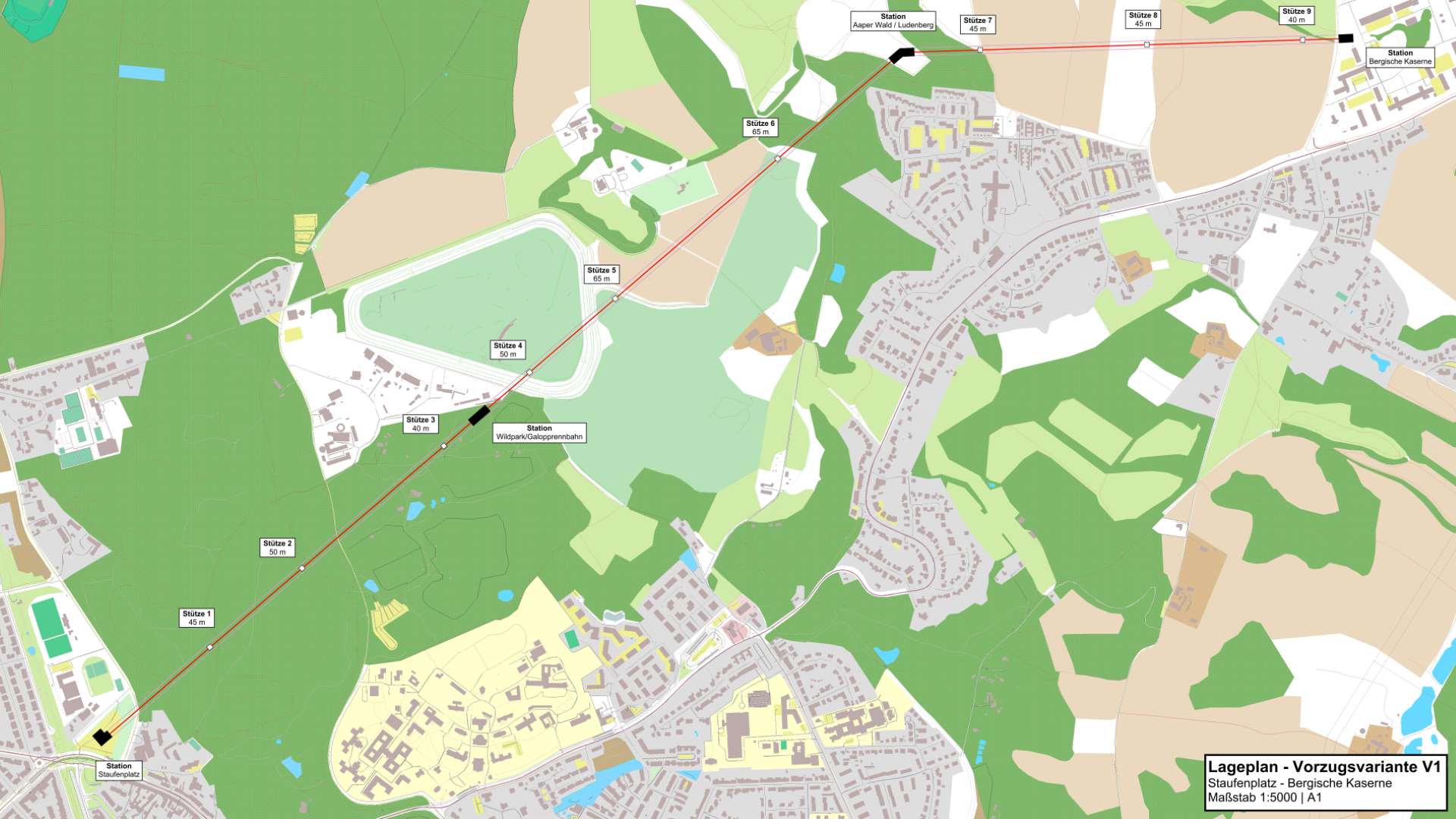
Dusseldorf Bergische Kaserne Ropeway | Feasibility Study
City of Dusseldorf
Germany
2021 – 2022
Bi-cable Gondola Detachable (BGD), Mono-cable Gondola Detachable (MGD)
Project description
As part of the discussions on long-term development options for the Bergische Barracks area, the city of Düsseldorf has identified urban ropeways as a possible solution in addition to the extension of the light rail system. The purpose of the ropeway study is to clarify the extent to which a ropeway can help to relieve the Bergische Landstrasse of the motorized individual traffic, while at the same time supporting the environmental alliance.
As part of a variant study, 22 different route options were examined, including an extension of the cable car to Knittkuhl. All variants were based on a complete integration of the cable car into the existing public transport network. The preferred option was the connection from Staufenplatz via the golf course – with intermediate stations at the Wildpark and in Ludenberg – to the Bergische Kaserne. This variant would not affect any residential properties or nature conservation areas.
Under optimistic assumptions, the coverage of costs of the preferred cable car line to the Bergische Kaserne without investment grants is about 60 percent. These assumptions include an almost full utilization of a large P+R area with about 1,500 parking spaces at the Bergische Kaserne, a steady population growth, and a modal split generally changed in favor of public transport.
The study concludes that without further push measures, only minor reductions of the motorized individual traffic volume on the Bergische Landstraße can be expected. Due to the short length of the cable car line and the necessary multiple system changes (car-cable car, cable car-light rail/streetcar/bus), only a few commuters in the Bergische Barracks area and beyond the Düsseldorf city limits will use the cable car system from a traffic perspective.
Due to the insufficient area coverage, the cable car cannot replace the bus line 738 from/in the direction of Mettmann along Bergische Landstraße as a backbone system for connecting Bergische Kaserne to Staufenplatz. In the case of a cable car solution, an additional public transport service would have to be created for the fine distribution in the area of the Bergische Kaserne and Ludenberg. This could be realized by means of a flexible shuttle bus service in the form of on-demand buses.
Service description
The following topics were part of the feasibility study:
- Passenger potential analysis incl. capacity estimations
- Variant analysis incl. evaluation and determination of preferred variant
- Cable car technology analysis incl. determination of preferred technology
- Routing and determination of station locations and supports
- System design and determination of system parameters
- Technical ropeway calculation incl. static rope line calculation
- Preparation of site plan and longitudinal profile
- Analysis of the land use
- Preliminary Environmental Impact Assessment (EIA)
- Infrastructure concept planning
- Planning procedures and time scheduling
- Estimation of investment and operating costs
- Investigation of funding opportunities
- Economic feasibility studies with determination of cost coverage rates
